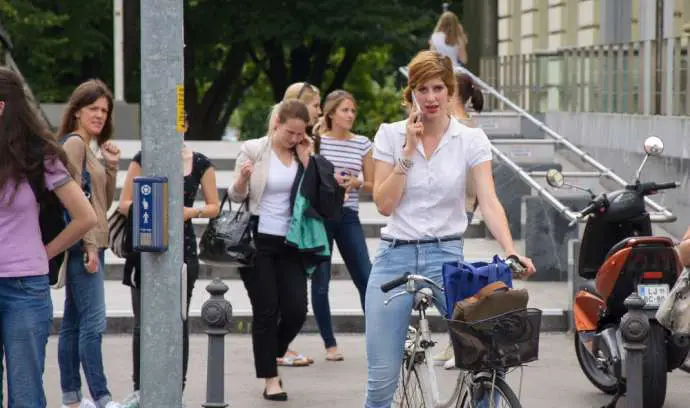STA, 14 December 2018 - Slovenian higher education students are one year younger than the average in the EU as they mostly decide to go to university immediately after the secondary school, which is not characteristic of other European countries, according to a survey carried out in all 28 EU member states.
The key points of the Eurostudent VI (2016-2018) survey were presented on Friday by Alenka Gril of the Educational Research Institute.
In the 2015/2016 academic year in Slovenia, a total of 77,354 were enrolled in tertiary education, of which 4,968 or 6.4% participated in the survey.
Their average age was 24.1, which is around a year below the average for students in all other EU member states, which stands at 25. There were more female students than male students in Slovenia, added Gril.
The share of part-time students in Slovenia is 13%, which is one of the highest shares in the EU. A majority of these students do not have a tertiary education background in their families.
"These students are mostly facing financial troubles and come from poorer families," she said, adding that they frequently had to work while studying.
Most Slovenian students also have jobs
The survey carried out by the Ministry of Education, the public institute CMEPIUS and the Slovenian Student Organisation (ŠOS) also shows that most of Slovenian students work during the academic year.
"Almost three-fifths work for the entire week during the academic year and are thus one of the most overburdened students in Europe, as they work and study for 51 hours a week on average," said Gril.
They work 14 hours a week on average, and only in six European countries students work more (15 hours) - Iceland, Poland, Estonia, Latvia, Hungary and the Czech Republic.
Also facing major financial troubles are students with long-term medical conditions, which represent a 5% share in total student population. Half of them believe that they are not provided sufficient support for studying.
Almost half of Slovenian students live with their parents or relatives (48%), while 19% live in dormitories or rented rooms.
On the occasion, the ŠOS pointed out that students face average monthly costs of EUR 500, while the state scholarship amounts to EUR 125, with only a fifth of students receiving it.
"As the survey showed, students are too much dependent on their own work and family. This means it is too difficult to get independent," ŠOS president Jaka Trilar said in a press statement.
The organisation has also detected a shortage of student dormitories, in particular in the western region of Primorska, but also in Ljubljana.
"The state has obviously failed to detect that bigger generations are coming," said Trilar, also noting that international student exchange programmes were mostly being attended by richer students.
It should be regulated at the EU level that more scholarships for mobility go to students from poorer families, he added.






